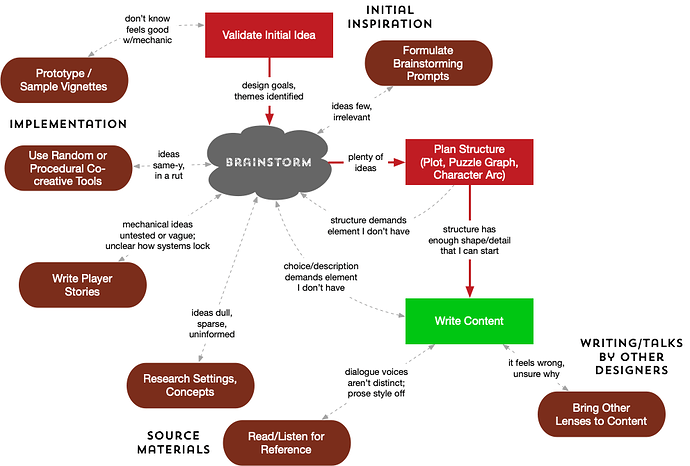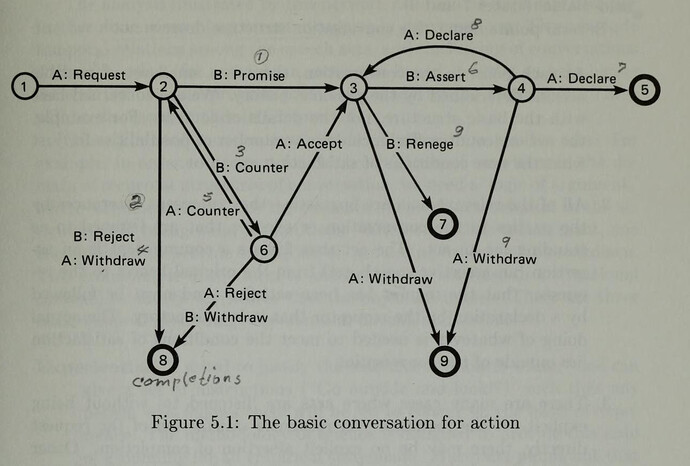Emily Short (@emshort) talks about “complicating” a story in this strategy for creating IF in a design blog post of hers:
Write the through-line first : come up with your setting and any prototype coding you need to do, and maybe make a list of puzzles/elements that you’d like to see in the finished game. Then create a simple outline design of the game and implement it so that you have something you can play (even if very quickly) from a beginning to the end, and which contains the most critical turning points of the plot. With that skeleton in place, consider what you like and dislike about the structure; you complicate the game incrementally, fleshing pieces out with new puzzles or improving on the simple puzzles/conversations that you used to start with.
Emphasis mine, from:
Then, later, in another blog post:
Iterate, complicate, add easter eggs
Things I expect to do during iteration and expansion:
- Make sure that there’s enough guidance for the player about how to proceed
- Add extra story branches
- Refine the pacing
- Revise prose
- Add easter eggs that play off things in other related stories
From:
A little more detail here but she really doesn’t get at the heart of what she means by “complicate”.
I’m approaching a new work of IF and really wanted to experiment with a design and study process and try to make something really rich and detailed. I was thinking of trying this “Write the through-line first” approach, but was wondering if anyone had some great suggestions or discussion around methods of complication.
I understand complication as taking the central ideas or values of the story and figuring out a way to make them weirder, deeper, to subvert them, to place doubt in the path of them. But I’m not sure of a PROCESS that works for this other than asking myself the question “Ok, how do I complicate this?” and just keep asking that question.

